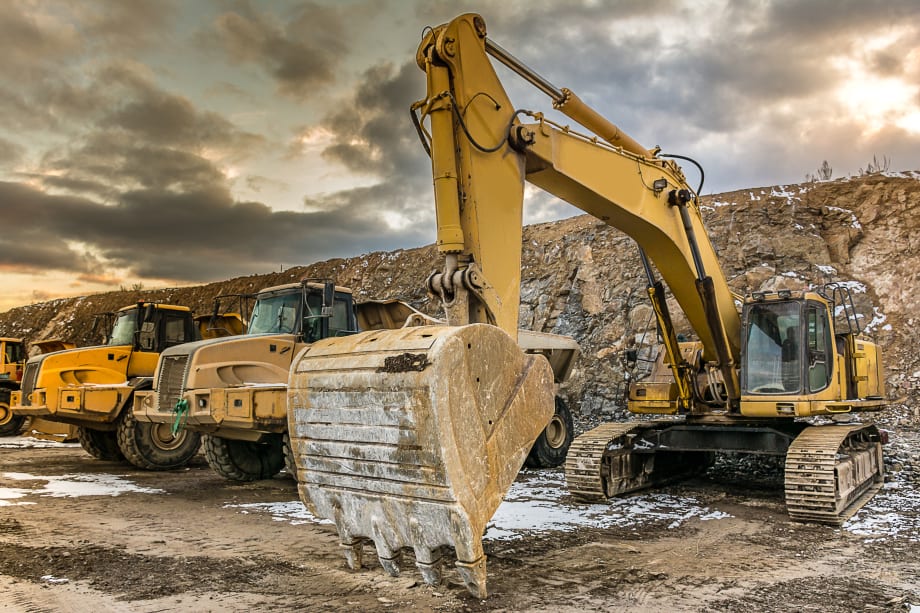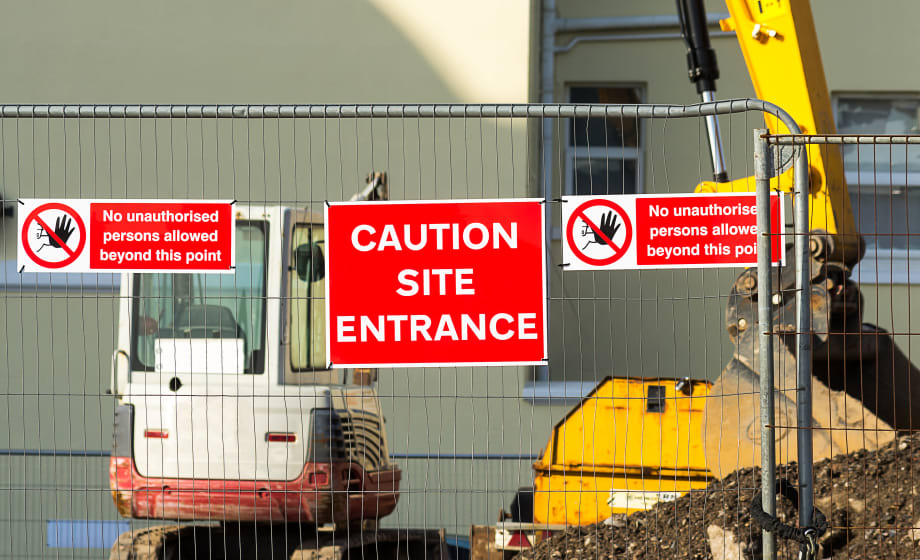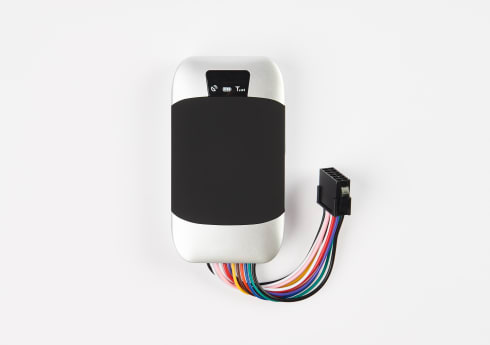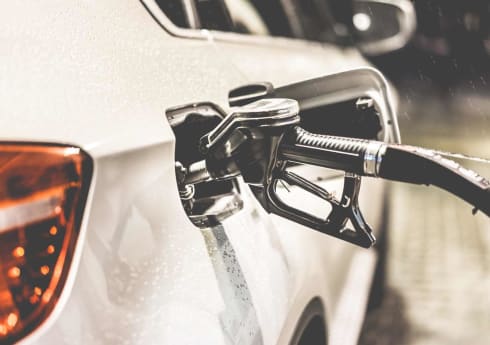Plant Equipment Tracking: A Complete Guide
No matter how good your insurance is, getting something like an excavator, dumper or an attachment stolen always ends up costing you money.
Wouldn’t it be great if there was a way to find out exactly where it was and get it back? This is exactly what plant equipment tracking can do. As part of a telematics solution, a plant tracking system can truly benefit your business.
(Updated Tue, 8 August 2023)

Here’s the data
Without plant trackers, only 5% of most types of stolen plant equipment is ever recovered. The highest recovery rate for any type of vehicle in the UK is 10% (pretty low, right?).
Yet there are some asset tracking companies whose recovery service, working with the police, is as high as 95%!
If you want to protect your plant equipment with trackers, read on to learn how they work and how to choose the best type for your business.
What can plant equipment trackers be used for?
Trackers can be put on any moving or stationary asset you don’t want stolen. Tracking construction equipment is one very popular use.
You can attach trackers to any type of powered or non-powered plant equipment from ride-on rollers to overhead gantry cranes, along with trailers, caravans, agricultural equipment, generators and any non-moving equipment or asset. We know companies that have even supplied asset trackers for valuable statues and beehives! The options are truly endless.
They typically cost just a few pounds a month for absolute peace of mind.
iCompario tip:
Think about whether you really need to pay more for an app to track your plant equipment each day. Many users can save a bit each month, as they don’t need this option.
Whatever you choose in terms of plant tracking, rest assured knowing your equipment is being tracked.
How does plant tracking equipment work?
Trackers look like a black plastic box from the outside, and they are installed into the asset using a magnet or a sticky pad. The idea is to place them where thieves are least likely to see them. Inside they contain a SIM card, a battery, radio signalling equipment, and may also contain a movement sensor and a GPS.
The plant trackers send a signal with their precise location once a day to the tracking software so you can find out exactly where they are, whether they’re stolen or just mislaid.
Plant trackers include their own battery which usually comes with a guarantee lasting several years. The software lets you know how much battery is left and the system will warn you if the battery indicator is low. It’s all easy and straightforward.
Plant tracker types
There are two basic categories of plant equipment trackers.
Stationary assets
Stolen Asset Recovery trackers fitted to stationary assets have a movement sensor which triggers an alert if the asset moves and will continue to alert on its location at regular intervals. Obviously, this type of security isn’t suitable for a vehicle or other asset which you’ll move when you use it.
Moving assets
Most plant trackers “ping” a server every 24 hours to show the asset’s location. These trackers for moving plant equipment work by sending three different types of signal:
- The Mobile Phone Network. A mobile phone network signal, finding the location using the cell masts. The advantage? It has no range limit! But when the asset moves from one mast to the next there can be a time delay of several minutes. This signal is sent once a day using the plant tracker’s SIM card. This form of tracking uses less power than traditional GPS tracking and may extend the battery life of a battery powered tracking device.
- A GPS Tracking signal, which relies on satellite location. This also has no range limit and sends a single daily signal using the SIM. The highly sensitive GPS receiver in the device will calculate its location within a few meters and send this information via the mobile network. The con? GPS Tracking is less effective if the satellite signal is blocked, this may happen if the asset is inside a building, barn, garage or underground car park.
- Homing Beacon – Radio Frequency (RF) Tracking. A radio signal on a specific frequency, which is emitted non-stop. This is the signal the recovery services tend to rely on when going with the police to physically recover assets, because it can confirm where something is even if it’s hidden inside a shed or under a haystack! If you’re thinking police movies action, this is the thing.
Specialist hand-held equipment and vehicle mounted aerials are used to track the specific radio frequency that the device emits and can work from up to 10 kilometres away. It can indicate the location very precisely to a matter of inches rather than feet.
Radio frequency works indoors and is key in identifying the building or lock up that houses the stolen equipment. This information is essential when working with the police to obtain a warrant or make an arrest.
iCompario tip:
The frequency of communications from the device can be increased to multiple communications per day with some trackers. But keep in mind that doing this will shorten the battery life.
Get a plant tracking system to make sure you’ll bust those thieves in case you ever need to.
What is the difference between plant equipment tracking and GPS vehicle tracking?
Don’t get us wrong! Plant equipment tracking includes GPS. It’s just that there are various differences in their use and features.
- Plant trackers are for security and recovery after theft, whereas GPS trackers are used to manage employees and track vehicles. GPS vehicle tracking shows continuously where your vehicle is, but plant trackers tell you their location just once a day. Plant tracking systems are ideal for non-moving assets.
- Plant trackers can give more precise location than vehicle tracking or telematics systems because of their continuous radio frequency signal. They are frequently used together with vehicle tracking and telematics.
- Plant trackers are not hardwired to the asset battery, so thieves do not know where to find them. GPS trackers don’t normally have their own independent power source. Plant trackers can be used on items that have no battery at all, since no wiring is required.
What are the benefits and uses of plant equipment tracking systems?

We’ve determined that plant tracking systems increase the chances of getting your asset back in case of theft by a lot. And we mean by really a lot! But that’s not all it does. Here are some more benefits to plant equipment tracking.
Improve security and save money
Plant tracking systems greatly improve the security of your plant equipment and save you money. That’s right!
Thieves usually remove telematics or vehicle tracking devices, which are easy to find as they are wired to the vehicle battery. But finding a plant equipment tracker is not as easy. Because it’s battery powered, it can be hidden really well, making it extremely hard to trace.
With a recovery service, your stolen plant is much more likely to be recovered. Their cost is normally a fraction of the usual losses suffered when plant equipment is stolen, even if it’s covered by insurance.
Plus, you do not have to make an insurance claim, so your premiums won’t increase at renewal.
Avoid losing company equipment
Plant equipment trackers are sometimes used by companies that have a problem with staff losing things. It happens, alright?
This may happen on very large sites or with equipment that is often moved around from one site to another. Now you’ve got a solution to it.
Protect assets that you offer for hire
If you offer plant equipment for hire or lease, you cannot use regular vehicle tracking for legal reasons without getting a written acceptance by the driver. But plant trackers don’t have legal restrictions, making them ideal to keep rental plant and equipment safe.
Protect any asset at all
Plant trackers don’t drain the vehicle or asset’s battery because they have their own. This also makes them suitable for assets without a battery.
Tips to choosing the right plant equipment tracking system
You can get plant trackers with or without a recovery service included in the price. Recovery teams will work with the police to get your property back, wherever it’s gone.
iCompario tip:
We strongly recommend you opt for the recovery service. A few companies have a recovery rate as high as 95% and others achieve close to 90%. Make sure you ask their recovery rate with picking your asset tracking provider.
Some plant trackers don’t have a customer-facing platform, meaning you don’t get an app to check where your asset is. If you choose this cheaper option, you simply phone the provider if your asset is stolen, and they do the rest. There are also some options to have the location sent to your vehicle tracking or telematics software instead.
Plant trackers should be Thatcham approved. The Thatcham security assessment (NVSA) can reduce the cost of insuring your asset.
You should also double-check the Ingress Protection (IP) rating of any plant tracker you plan to buy. IP codes tell you how well the metal casing resists rain getting inside and potentially damaging the working parts.
Get quotes for plant equipment tracking systems
iCompario is the free online marketplace for business products and services. Our team follows up online queries by phone so every site visitor finds their ideal, future-proof product at the best price possible.
For quotes on trackers for plant equipment, send us a few details and we’ll do the rest.



